Ciencia, ciencia, ciencia: una de mis asignaturas favoritas
Ciencia, ciencia, ciencia: una de mis asignaturas favoritas
Aprendizaje esperado: explora ilustraciones sobre temas de ciencias.
Énfasis: explora ilustraciones sobre un tema concreto de ciencias.
¿Qué vamos a aprender?
Explorarás información acerca de ciencia, incluidos los dinosaurios.
¿Qué hacemos?
| Today, we are going to share some information about science, including dinosaurs. Let’s start from the beginning. Science helps us to learn a lot of things about nature and technology. Here we have some images related to science. Let’s look at them. |
Hoy les compartiremos información acerca de ciencia, incluidos, los dinosaurios. Empecemos por el principio. La ciencia nos ayuda a entender muchas cosas acerca de la naturaleza y la tecnología. Aquí tenemos algunas imágenes relacionadas con la ciencia. Vamos a verlas. |
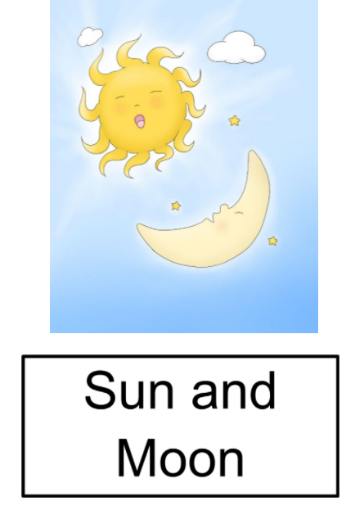
| For example, thanks to science, we know that the Earth turns around the sun, and the moon moves around the Earth. | Por ejemplo, gracias a la ciencia, sabemos que la Tierra gira alrededor del sol y que la Luna gira alrededor de la Tierra. |

| Science also tells us that it takes a whole year for the Earth to go around the sun. | La ciencia también nos dice que la Tierra tarda un año en dar la vuelta al Sol. |
La ciencia también nos ayuda a entender la naturaleza: los animales, las plantas, los materiales que vemos todos los días.
| Actually, that is the next image. Look at it! | De hecho, esa es nuestra siguiente imagen. ¡Mírala! |
| Look at these wild animals. This is a lion, and science has taught us that its mane is used to scare other animals. Lions, as most of the felines, are good hunters. |
Mira estos animales salvajes. Este es un león, y la ciencia nos ha enseñado que su melena sirve para asustar a otros animales. Los leones, como casi todos los felinos, son buenos cazadores. |
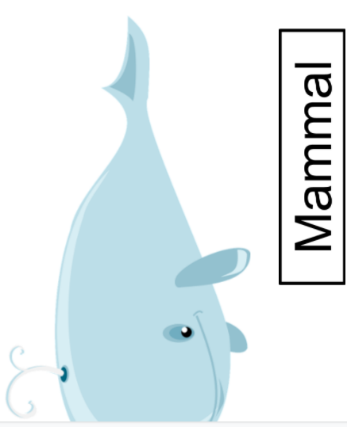
| Are they mammals as well? Yes, they are. Like whales. Can you believe that scientists discovered that these two different animals share the way they feed their babies? Science also helps us to take care of our health. Thanks to it, we know what food is better for us to grow and feel good. |
¿Son ellas también mamíferos? Sí lo son. Como las ballenas. ¿Puedes creer que las científicas y los científicos descubrieron que estos dos animales tan distintos comparten la manera en que alimentan a sus bebés? La ciencia también nos ayuda a cuidar nuestra salud. Gracias a ella, sabemos qué comida es mejor para crecer y sentirnos bien. |

| Thanks to a lot of scientists, we have the COVID-19 vaccines. Actually, we are in communication with girls and boys at home because science helps us to create technology elements. |
Gracias a muchas y muchos científicos, tenemos vacunas contra COVID-19 De hecho, estamos en comunicación con las niñas y niños en casa, porque la ciencia ayuda a crear tecnología. |

| Now, I want to invite you to play a game to see how much you know about science. | Ahora, quiero invitarte a participar en un juego para ver cuánto sabes sobre ciencia. |


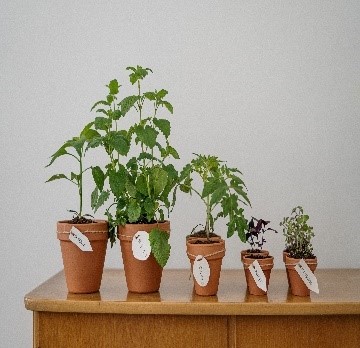


| Here we have some sentences about some facts that science has taught us. And on the right, we have some images related to these sentences. |
Aquí tenemos algunos enunciados sobre hechos que la ciencia te ha enseñado. Y en el lado derecho, tienes algunas imágenes relacionadas con esos enunciados. |
Tendrás que relacionar los enunciados con la imagen.
| You have to match the sentence with the corresponding image. The first sentence says: It turns around the sun once a year. We have already talked about this. It matches with Earth. Second sentence: They are meat eaters and live in the ocean. It must be sharks. Third sentence: They grow with water and sunlight. The plants. Fourth sentence: It is always colorless, odorless, and tasteless. It is essential for life. The glass of water. Fifth sentence: They are born from eggs. Birds are born from eggs. Great! We did it. Is it time to talk about dinosaurs yet? Yes, it is time to talk about dinosaurs. Let’s learn some facts about them. |
Tienes que hacer coincidir la oración con la imagen correspondiente. El primer enunciado dice: gira alrededor del sol una vez al año. Ya hemos hablado de esto. Coincide con la Tierra. Segundo enunciado: son animales carnívoros y viven en el océano. Deben ser los tiburones. Tercer enunciado: Crecen con agua y luz solar. Las plantas. Cuarto enunciado: Es incolora, inodora e insípida. Es esencial para la vida. El vaso de agua. Quinto enunciado: Nacen de un huevo. Los pájaros nacen de un huevo. ¡Genial! Lo logramos. ¿Ya es momento de hablar de dinosaurios? Sí, es momento de hablar dinosaurios. Aprende algunos datos sobre ellos. |
| We know that there were 350 different types of dinosaurs. From dinosaur’s bones and teeth, we can learn the animal’s size and weight. Some dinosaurs walked on four legs, others on their two hind legs and they extended their long tails for balance. A dinosaur’s life cycle was related to its size. Smaller dinosaurs lived about five years while others lived for over a hundred. The first dinosaurs’ fossils were found at the beginning of the XIX century. There were dinosaurs as small as birds and as big as buildings. Now, here we have five different types of dinosaurs. Maybe you know their names and some of the characteristics, but if you pay attention, you can learn something new. |
Se sabe que hubo más de 350 diferentes tipos de dinosaurios. De los huesos y dientes de los dinosaurios se podía determinar su tamaño y su peso. Algunos dinosaurios caminaban en cuatro patas mientras que otros en sus dos patas traseras y extendían su cola para balancearse. El ciclo de vida de los dinosaurios se relacionaba con su tamaño. Los dinosaurios más pequeños llegaron a vivir cinco años mientras que otros llegaron a vivir más de cien años. Los primeros fósiles de dinosaurios se encontraron a inicios del siglo diecinueve. Existieron dinosaurios tan pequeños como los pájaros y tan grandes como los edificios. Ahora, aquí tenemos cinco distintos tipos de dinosaurios. Quizás sepas sus nombres y algunas características, pero si prestas atención, podrás aprender algo nuevo. |
| Name: Tyrannosaurus Rex | Nombre: Tirano-saurio Rex |
| Length: 13 meters | Longitud: 13 metros |
| Diet: Carnivore | Dieta: Carnívoro |
| Weight: 8 tons | Peso: 8 toneladas |
| Characteristic: Its name means “King of the tyrant lizards”. | Característica: Su nombre significa Rey de los lagartos tiranos. |
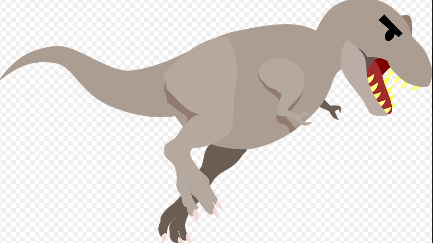
| Name: Stegosaurus | Nombre: Stegosaurus |
| Length: 9 meters | Longitud: 9 metros |
| Diet: Herbivore | Dieta: Herbívoro |
| Weight: 3 tons | Peso: 3 toneladas |
| Characteristic: It had spines on its back. | Característica: Tenía espinas en su espalda. |
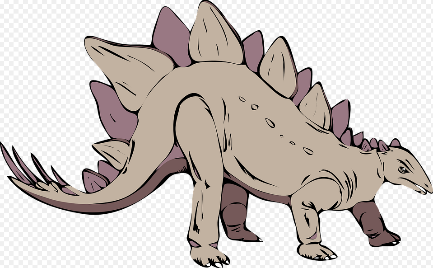
| Name: Velociraptor | Nombre: Velociraptor |
| Length: 1.8 meters | Longitud: 1.8 metros |
| Diet: Carnivore | Dieta: Carnívoro |
| Weight: 60 kilograms | Peso: 60 kilogramos |
| Characteristic: It could reach up to 39 km per hour. | Característica: Podía alcanzar hasta los 39 km por hora. |
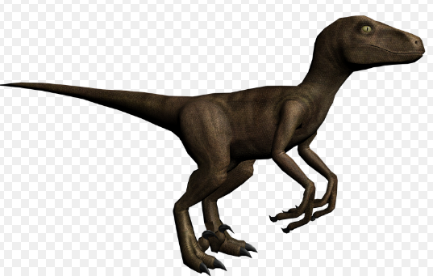
| Name: Diplodocus | Nombre: Diplodocus |
| Length: 52 meters | Longitud:52 metros |
| Diet: Herbivore | Dieta: Herbívoro |
| Weight: 25-30 tons | Peso: 25-30 toneladas |
| Characteristic: Its long neck could reach up to 6.5 meters in length. | Característica: Su largo cuello podía llegar a medir hasta 6,5 metros. |

|
Name: Triceratops |
Nombre: Triceratops |
| Length: 9 meters | Longitud: 9 metros |
| Diet: Herbivore | Dieta: Herbívoro |
| Weight: 10 tons | Peso: 10 toneladas |
| Characteristic: Its name means three-horned face. | Característica: Su nombre significa cara de tres cuernos. |

| Good job! We hope you enjoyed the activities that we shared today. Thank you so much for joining us. See you son. |
¡Buen trabajo! Esperamos les hayan gustado las actividades que les compartimos el día de hoy. Gracias por acompañarnos. Nos vemos pronto. |
¡Buen trabajo
Gracias por tu esfuerzo.
